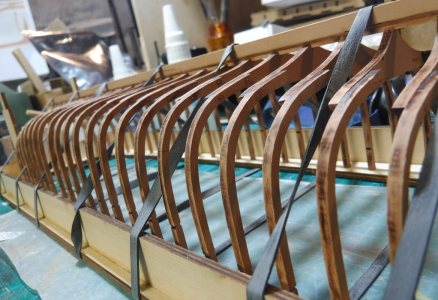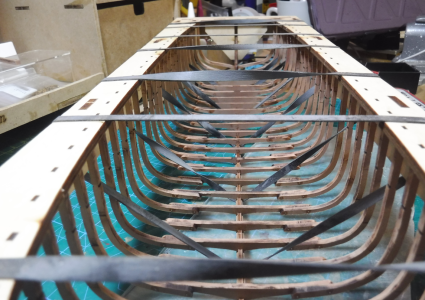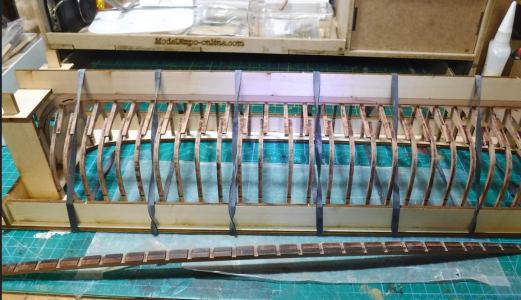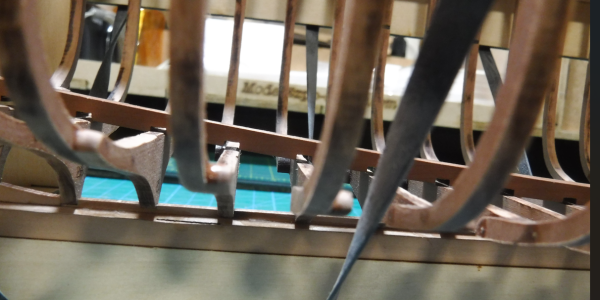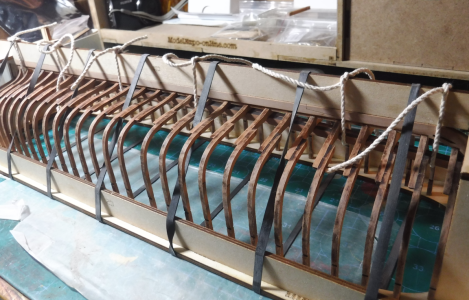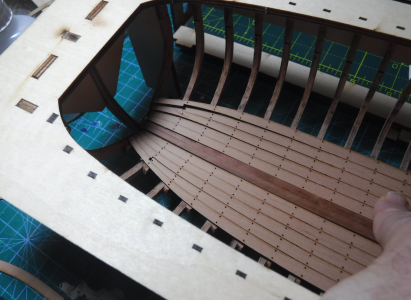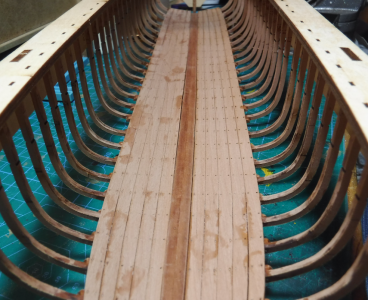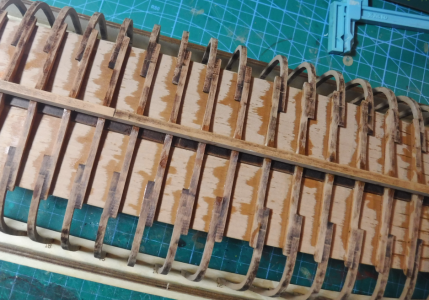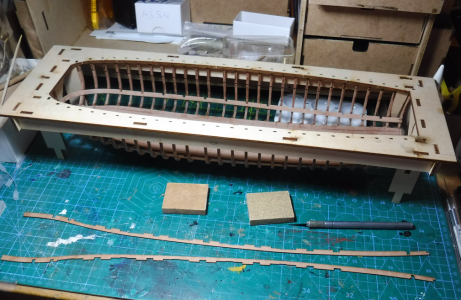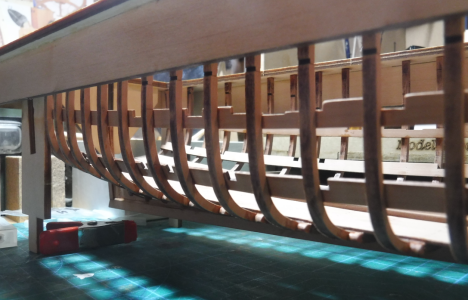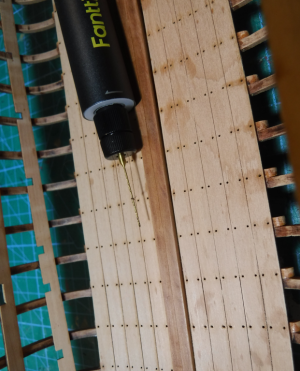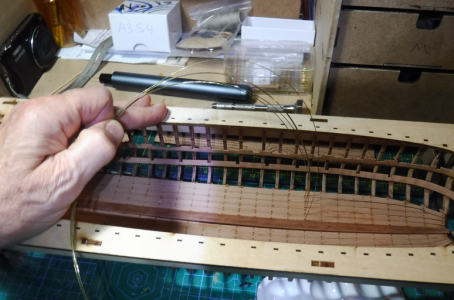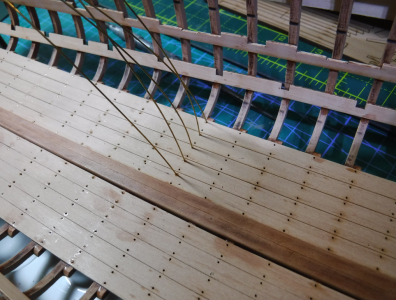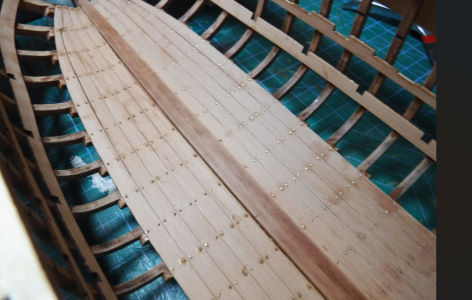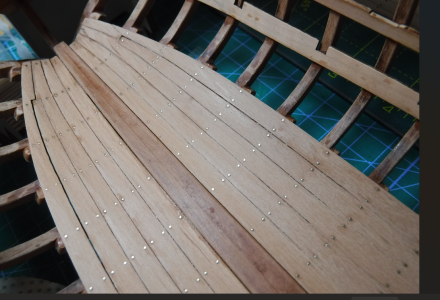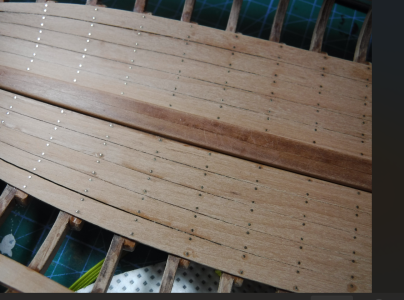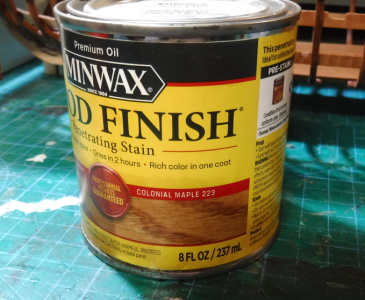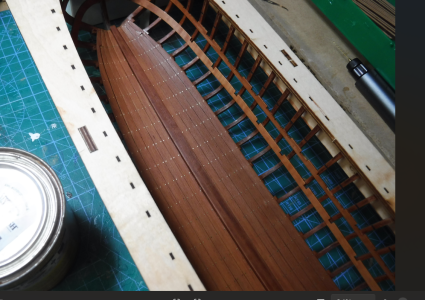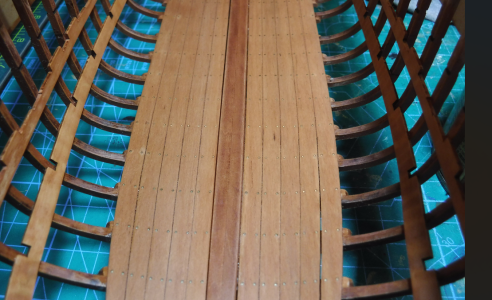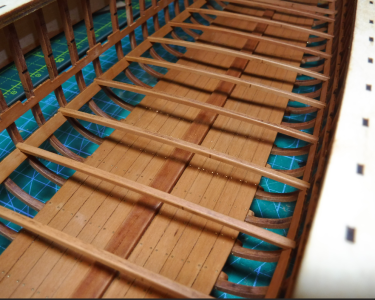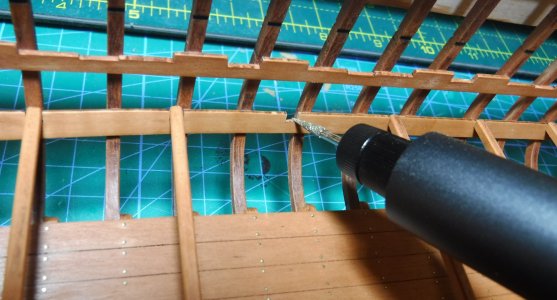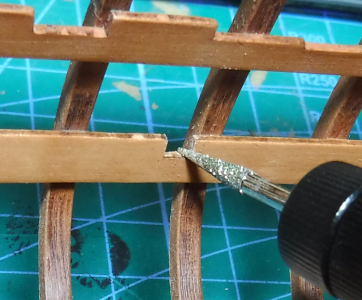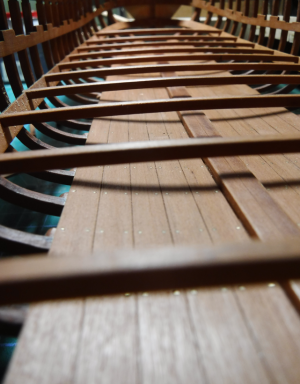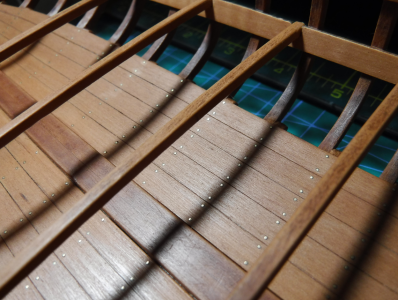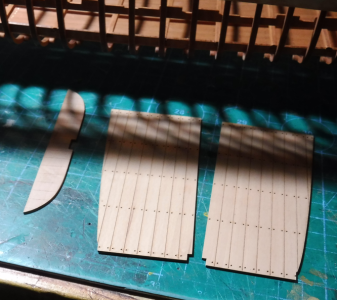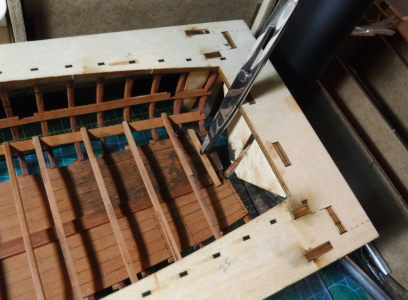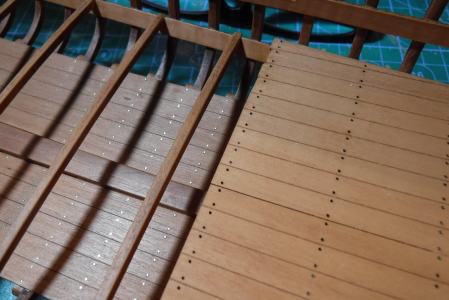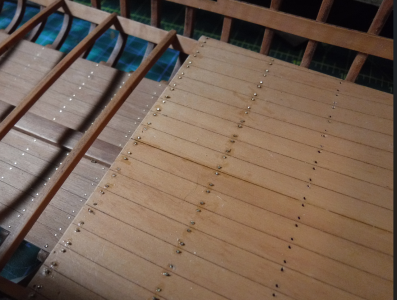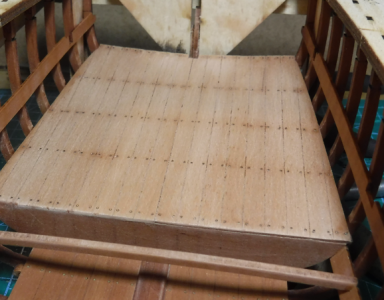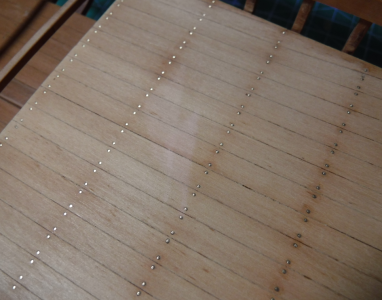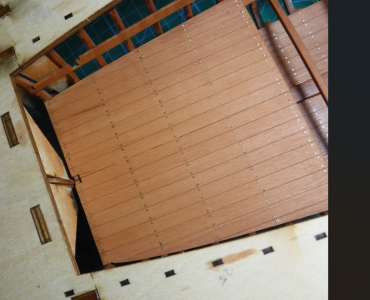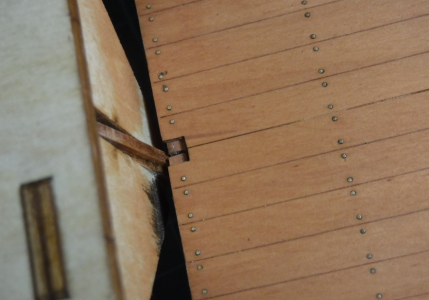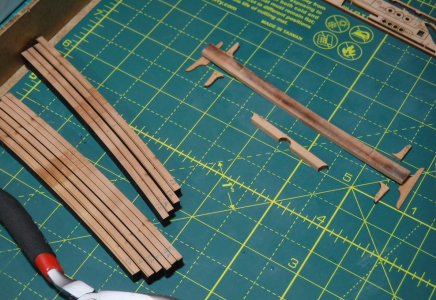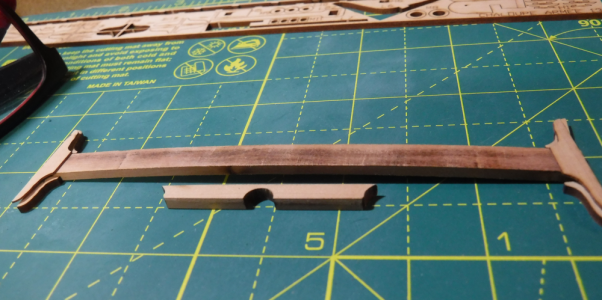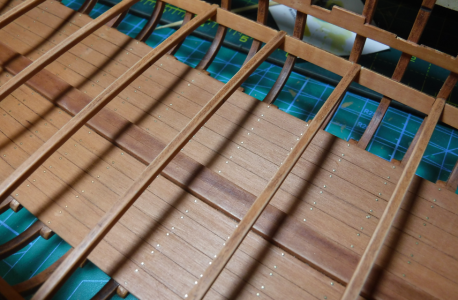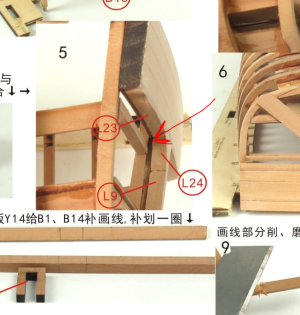A Partial Build Log of my 1:24 French Longboat in Pearwood.
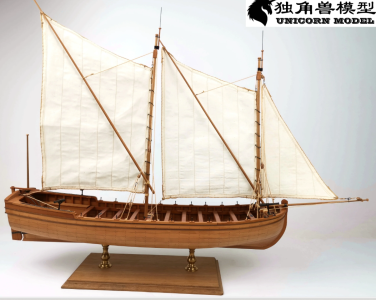
This is what I'm building ... and it's my first build log - that said, let's start.
I say partial, because I'm 2 weeks into this build already.
My experience - I have 4 unfinished kits in my workshop and 4 finished models on display. I'd stop work on a kit if I found it was beyond my level. So - I've built the 1:12 Maine Peapod lobster skiff by Midwest Products. Then finished the 18th Century 1:24 Armed Longboat by Model Shipways. A couple years ago I completed the 1:32 Shallop by shipsofpavelnikitin. And I just completed the 1:64 HM Cutter Sherbourne by Vanguard Models UK.
I enjoyed them all.
HOWEVER - I prefer the larger scale models. And when I saw rtwpsom2's build log of this same boat - and saw all those exposed frames in the hull, and saw that the scale was 1:24 - all that exposed wooden construction - it just appeals to me - so I ordered the pearwood version from drydockmodelsandparts up in Canada, for $199USD and also paid a $59.70 tariff/tax, which was called a duty on the invoice.
Got it a few weeks ago - and been tearing into it since. IOW - I already have the jig built, the frames on the keel, and the flooring stained and nailed to the frames. But I have pics - and will try to recreate the build.
The instructions are in Chinese - so I converted em into a bunch of English pics, 3 English pics per page of Chinese instructions, using Google Translate. And zoly99sask put those pics into a pdf - nice.
Some links ...
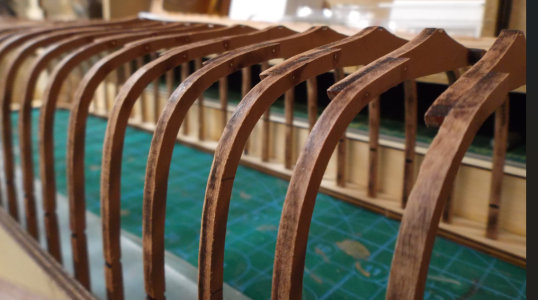
And here it is, with the keel, ready for some fitting and gluing
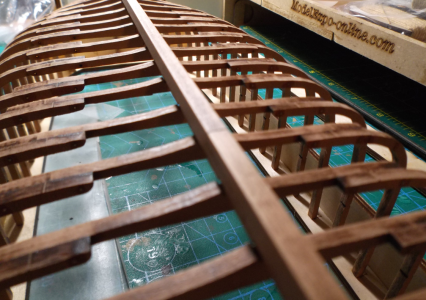
A note about building the frames.

This is what I'm building ... and it's my first build log - that said, let's start.
I say partial, because I'm 2 weeks into this build already.
My experience - I have 4 unfinished kits in my workshop and 4 finished models on display. I'd stop work on a kit if I found it was beyond my level. So - I've built the 1:12 Maine Peapod lobster skiff by Midwest Products. Then finished the 18th Century 1:24 Armed Longboat by Model Shipways. A couple years ago I completed the 1:32 Shallop by shipsofpavelnikitin. And I just completed the 1:64 HM Cutter Sherbourne by Vanguard Models UK.
I enjoyed them all.
HOWEVER - I prefer the larger scale models. And when I saw rtwpsom2's build log of this same boat - and saw all those exposed frames in the hull, and saw that the scale was 1:24 - all that exposed wooden construction - it just appeals to me - so I ordered the pearwood version from drydockmodelsandparts up in Canada, for $199USD and also paid a $59.70 tariff/tax, which was called a duty on the invoice.
Got it a few weeks ago - and been tearing into it since. IOW - I already have the jig built, the frames on the keel, and the flooring stained and nailed to the frames. But I have pics - and will try to recreate the build.
The instructions are in Chinese - so I converted em into a bunch of English pics, 3 English pics per page of Chinese instructions, using Google Translate. And zoly99sask put those pics into a pdf - nice.
Some links ...
- Original Instructions in Chinese
- zoly99sask's PDF with translated instruction pics
- This is rtwpsom2's build log of the cherrywood version of this kit. Bob's build log is the reason I ended up doing this kit.
- Build Videos - important addition to the limited instructions

And here it is, with the keel, ready for some fitting and gluing

A note about building the frames.
- They can be assembled out of the jig
- Simply by pinning them together and gluing them.
- The laser cutting of the pinning holes is so accurate - that this works. Besides which, the frames have some flex to em, when inserted into the jig.




